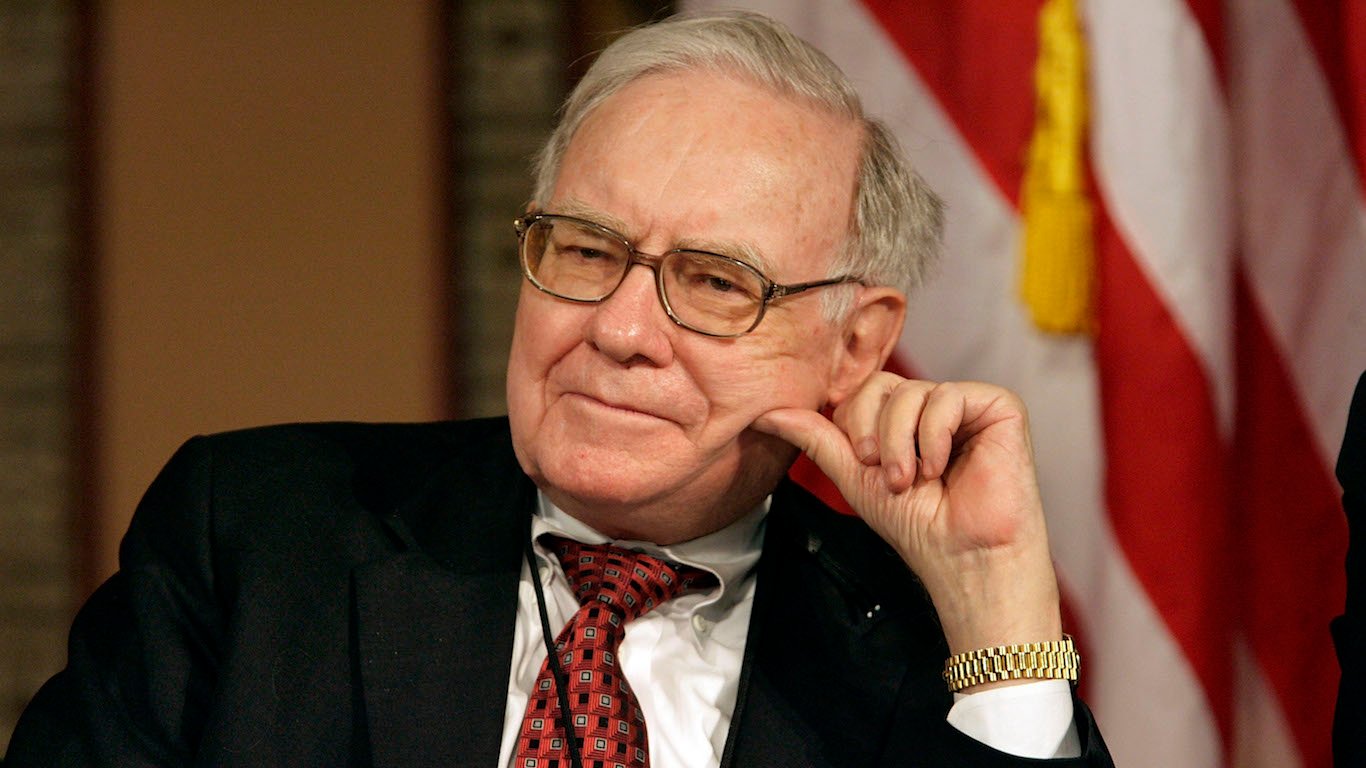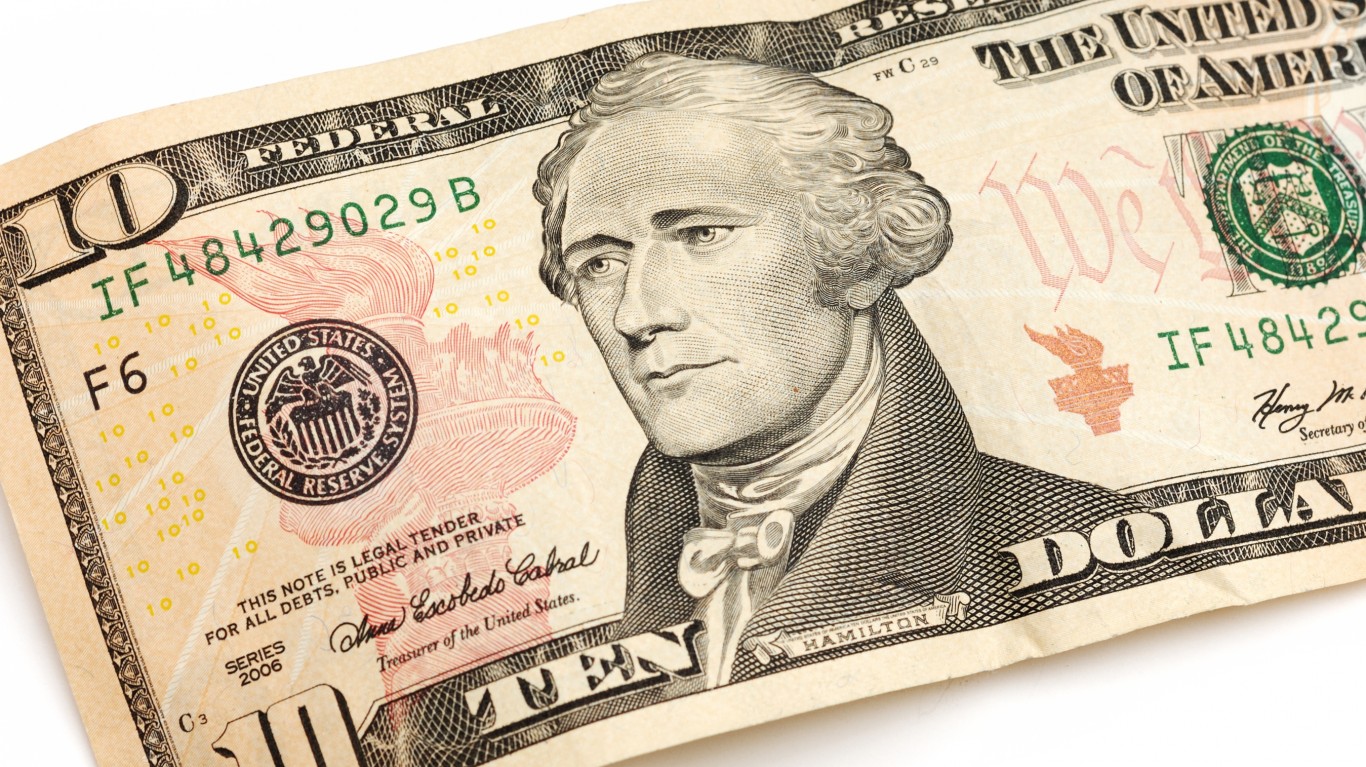

There have been many concerns in the stock market and bond market in the second half of 2019. It is important to keep in mind that the major U.S. stock market averages are still up double-digit percentages year-to-date and that the bull market is now handily over 10 years old. Yet, the global growth story is faltering, Europe is heading ever deeper into negative interest rates as a technical recession brews, international tensions remain hot with Iran and North Korea, and the U.S. and China spat has turned into a real trade war. All this can be overwhelming for the average investor. That’s why it’s important to use advice and lessons from some of the smartest and most successful market masters, and one of them would have to be Warren Buffett.
The swings in the stock market have become frequent enough that some investors probably couldn’t guess if the market is up or down in 2019. The news flow of the modern era can be interrupted and reversed in a second based on a tweet. For the Average Joe, relying on some of the lessons and experiences from people like Buffett may be all they have left.
Periods of uncertainty can easily turn into ones of panic. After all, the media’s use of “recession” in headlines and in video has become rampant and about as improperly used as “decimated.” That said, a recession will come one day, and after a more than 10-year recovery, history dictates that it has to be closer to happening than farther away. So, what would Buffett do?
The public has trusted Buffett for decades, and more than a few people have considered him the world’s greatest investor of the modern age. He built Berkshire Hathaway Inc. (NYSE: BRK-A) into a $500 billion conglomerate, and as of June 30, 2019, Buffett and his portfolio managers owned about $208 billion worth of public stocks. Being called the “Oracle of Omaha” has to mean something in harder or more volatile times.
Chances are high Buffett knows more than just a thing or two about the markets and finance. In some ways, his conglomerate has acted like a holding company, mixed with private equity, employing hedge fund strategies and always trying to employ value and income investing trends with the ups and downs of the markets. Buffett even has acted as an investment banker and the lender of last resort.
24/7 Wall St. has tracked many topics and trends about Buffett over the years, major changes in his portfolio of stocks, many acquisitions and many interviews, and we have even referred back to the many books with Buffett’s wisdom.
One gem that Buffett always maintained is to be greedy when others are fearful, and fearful when others are being greedy. This message about not always following the crowd should be clear enough, but there are so many other rules and generalities that Buffett employs that it can be hard for the average investor to keep up.
Investors should keep in mind that many of the great business climate changes are only just now taking hold. Some changes in monetary policy that the public cannot control may not be fully reflected in the economy for months or even a year, in some cases.
The 10 lessons offered up here that employ Buffett strategies are certainly not the only considerations that investors should have. They are also not in any particular order. Here are 10 lessons of sanity for investors to always consider when markets begin to act less than sane.
1. Using Rules-Based Investing Strategies
It’s always important that investors consider what a company has for leadership, how defensible its business moat is and how profitable a company is. Jefferies once outlined the 13-point checklist that Buffett’s investments and acquisitions fit within. 24/7 Wall St. has even outlined 10 strategies for common investors to invest like Buffett using a mindful long-term view with a simple and straightforward approach.
Buffett might not always follow his own rules to the tee, but he seems to end up being right more often than not. Maybe using rules-based investing decisions should be a good start investing sanely during periods of insanity in the markets.
2. Taking Advantage of Business Changes
Buffett gave a good sharp reminder to admit that sometimes the investment thesis can change within a company. This was the case in May of 2017 when it was first revealed that Buffett had started selling out a large portion of his stake in International Business Machines Inc. (NYSE: IBM). Buffett even said he didn’t sell because of earnings disappointments but because he did not value IBM the same way he did six years earlier.
It is also the case, one that in hindsight Buffett should have avoided, but during the retail plummet of 2016 and early 2017, Buffett decided that the Amazon.com Inc. (NASDAQ: AMZN) death star was big enough that he rethought his investment in Walmart Inc. (NYSE: WMT), and the pressure of Jeff Bezos made him dump the mighty Walmart. Now Berkshire Hathaway has bought Amazon shares in 2019.
Rethinking an investment thesis also allowed Buffett to finally decide to buy into Apple Inc. (NASDAQ: AAPL) in the first half of 2016 after Apple shares had lost one-fourth of their value from a year earlier. Buffett had avoided airlines for a half-century or so too, but now he and his team own close to $10 billion worth of airline shares.
3. Knowing How Taxes on Gains, Losses, Dividends and Interest Work
Sometimes it can be very tempting to lock in big gains in stocks that may seem less attractive today than they did a year ago, five years ago or even more than a decade ago. The problem with selling big gainers is that the taxes have to be considered for whatever else you might want to buy. Buffett had five big positions in which the profits were north of $10 billion each back in 2017, but whatever tax rate has to be paid implies that a new position as a replacement has to be undervalued by that same amount for it to make sense. Otherwise, the sale isn’t a wash sale per the IRS rules but it may in effect be a wash to the investor.
On taxes, there is a reason that most investors should look at opportunities for long-term gains rather than short-term ones: you get the long-term capital gains treatment in taxes and not taxed at your income tax rate. When it comes to big sell-offs, sometimes big losses can be locked in as a means of protecting against paying a big tax bill on other gains.
4. Keeping a Basket of Great Businesses
Buffett has sounded as though he’s on autopilot in some interviews, with variations of him saying “America’s best days are ahead of it.” Still, his investment themes have done better than most investors have done. Buffett’s 2016 annual report outlined how good businesses should be viewed as a whole basket rather than just based on the market sentiment of a day, week or even longer when times are tough: “American business – and consequently a basket of stocks – is virtually certain to be worth far more in the years ahead. Innovation, productivity gains, entrepreneurial spirit and an abundance of capital will see to that.”
On keeping a great basket of businesses, it is not uncommon for Buffett and Berkshire Hathaway to own stakes in 50 or more companies at a given time. Some investors would call that extreme diversification.
5. It’s OK to Change Your Mind and Outlook
It’s okay to change your opinion or outlook. This can be applied to sectors, stocks or even the market in times of extremity. Buffett personally would not have invested in the airline industry for many years. A multibillion-dollar airline bet was made by one of Buffett’s top new investment team members (Ted Weschler or Todd Coombs). By then the airlines had finally consolidated into a few companies with defendable moats, major pricing power on tickets, reliably low jet fuel prices and even the power to start gouging customers on fees and policies.
Buffett had in the past referred to the airline industry as a death trap, and Buffett had even gone as far in prior years to say that the best airline bet would have been to shoot the Wright brothers down. After the portfolio managers bought the major airlines, Buffett even ordered that Berkshire Hathaway should buy into Southwest Airlines Co. (NYSE: LUV), as Buffett told CNBC that he didn’t want Herb Kelleher thinking he did not favor Southwest out of the other legacy carriers.
It’s okay to change your mind about industries and sectors over time, and that needs to be considered if the prices of certain companies or sectors become too cheap during a market sell-off. Buffett also has rotated in and out of energy sector shares so many times that he obviously changes his mind about the future of oil and gas too.
6. Avoiding Bubbles
The media may use the term “bubble” more than they should, but sometimes valuations and asset prices rise too much. Missing a big run higher won’t send you to the poor house, but chasing a fad or a trend late in the game may burn an investor where their wallet was supposed to be. Many modern and classic investors still fight over how to view bitcoin, but bitcoin’s meteoric rise from under $1,000 to almost $20,000 (and then back under $10,000) should speak for itself. It’s easy to argue that Buffett (and most of the rest of us) missed the great bitcoin bubble inflating. He started calling bitcoin a mirage back in 2014.
If an investment or a financial class is too hard to understand, or if you just cannot agree on how sound the fundamentals are, then it’s fine to keep away and look elsewhere to invest within your risk tolerance. Buffett does not chase bubbles in technology or other areas of the stock market. This may have come with a lot of opportunity costs, but he likes to stick with what he can easily understand.
7. Picking Your Price for Value
A classic sense of investing in Buffett is one in which there just might be not just one single instance. Buffett has employed the theory of value investing for years, but that might not just be a low price-to-earnings (P/E) ratio. Buffett is willing to be opportunistic, and sometimes Joe Public can think like Buffett if it seems that the stock market carnage is becoming too great.
In this instance, the strategy would be to put together a list of the companies you think are the best run that will do well in the long-term business cycle changes and pick your price. If a stock was too expensive or had run too much without pullbacks at $50, think about what price you are willing to pay and set limit orders. If the market loses its sanity and the company’s stock drops to $35, you might be willing to own it there, even if you have no idea whether you caught the bottom. Credit Suisse even issued a list of potential Buffett acquisitions in early 2019.
8. Patience and Discipline Must Be Maintained at All Times
Buffett rarely goes “all-in” when it comes to investing in stocks. While an outright acquisition is all-in, your investing habits likely don’t evaluate acquisition targets. The simple rule is that you don’t have to buy your shares all at once. In too many instances to count, Buffett and his team started a position in a new stock that did not look massive at first, but then the position grew and grew over time. Sometimes the Berkshire Hathaway team adds to a position for years. This was seen in Apple, and the best example was Wells Fargo & Co. (NYSE: WFC). Buffett accumulated shares for many years. There are instances when Buffett may make cuts and then reverse back to additions. It’s rare, but it has happened.
Some investors also refer to gradually accumulating shares as “legging in” on a position, and when stocks are falling the traditional buying at various prices is thought of as “dollar cost averaging.” Now think about this after accumulating a position over the course of time: you don’t have to sell your winning or losing shares all at once either.
9. Value Traps: Lower Prices Alone Don’t Make Companies Cheap
Sometimes certain stocks have a price that keeps falling. It may have been a great business before, but it’s important to know that you should not try to catch a falling knife. Buffett has come to the rescue of many companies before (General Electric, Goldman Sachs, Bank of America and so on), but those are generally in times of need when Buffett thinks he can get a steal (he got better terms than the government in TARP).
Then there are instances when management has hurt a company, or when the management team has lost the trust of the public and shareholders. Buffett does not go after companies with accounting irregularities, and most investors should consider that. If a stock fell to $40 from $50, it’s probably “cheap” for a reason, and that alone does not entice Buffett when there are internal problems in a company.
10. Picking Good Dividends and Buybacks as Backstops
When financial markets become uncertain, some investors decide to hunker down in companies that have safe dividends and also are buying back stock over time. Buffett himself rarely buys back Berkshire Hathaway shares, and Buffett has outright refused to pay his Berkshire shareholders a dividend. Still, if you look at his massive investment portfolio it is certainly clear that it’s full of companies that have safe dividends that grow over time.
Dividends being safe means that there is little or no risk to a company’s ability to pay those same (or better) dividends in the years ahead, even if a recession comes. Buffett’s portfolio of stocks also is full of companies that have used capital to buy back their own stock to lower the float of shares.
Depending on the business cycle and the sectors selected, dividends alone can account for one-third to a half of investors’ total returns over time. In periods of uncertainty, sometimes companies with multibillion stock buyback plans might be the biggest buyer of stock during weak markets.
Essential Tips for Investing: Sponsored
A financial advisor can help you understand the advantages and disadvantages of investment properties. Finding a qualified financial advisor doesn’t have to be hard. SmartAsset’s free tool matches you with up to three financial advisors who serve your area, and you can interview your advisor matches at no cost to decide which one is right for you. If you’re ready to find an advisor who can help you achieve your financial goals, get started now.
Investing in real estate can diversify your portfolio. But expanding your horizons may add additional costs. If you’re an investor looking to minimize expenses, consider checking out online brokerages. They often offer low investment fees, helping you maximize your profit.
Thank you for reading! Have some feedback for us?
Contact the 24/7 Wall St. editorial team.
 24/7 Wall St.
24/7 Wall St.


